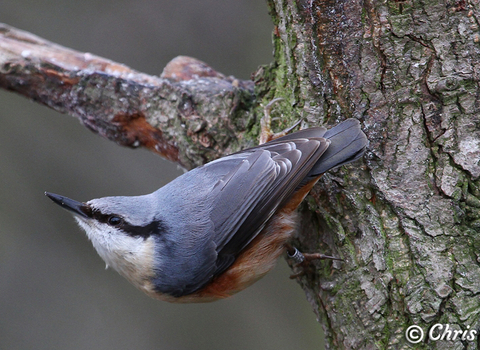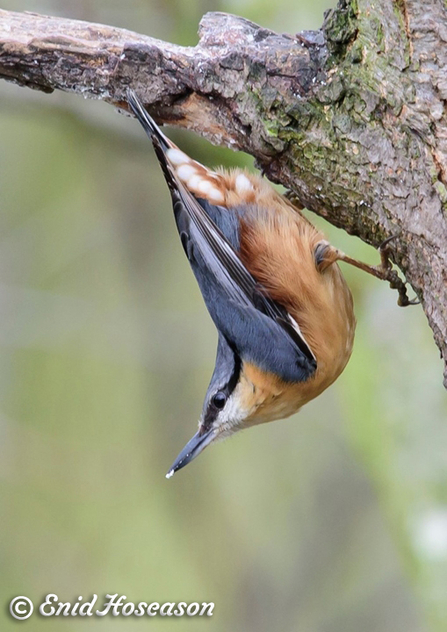
Nuthatch (c) Chris White
Nuthatch
The nuthatch Sitta europaea is one of 5 species of nuthatch found in Europe and the only species breeding in the UK. It has a very wide distribution found from Scandinavia to North Africa and east across to southeast Asia and Japan.
Once restricted largely to the south of England the 20th century has seen this bird spread north. It is not found in Ireland and it has only begun moving into Scotland since the 1980’s. The move may be partly due to climate change producing milder winters but also perhaps due to garden bird tables. It is a very sedentary bird, rarely traveling further than 1km so any changes in range are likely to be slow with young birds dispersing more than adults.
The nuthatch is a colourful showy bird reaching about 14 cm in length. They are stocky birds with a grey-blue back and wings, reddish brown flanks (apparently brighter in males) and a dark line running through the eye and into a strong, dark, stocky bill. They are regular visitors to bird feeders and are often spotted both in the trees and on feeders at Low Barns.

Nuthatch (c) Enid Hoseason
The name nuthatch comes from the middle English name “nuthak” meaning nut hacker from it’s habit of wedging a nut into a crack then repeatedly bashing it with its beak to get into the soft kernel. Another name for this bird is a Mud Stopper as birds typically reduce the size of their nest entrance hole to dissuade predators from entering by filling the edges with mud, sometimes to the extent that they then struggle to get in. They particularly like using old great spotted woodpecker holes.
Nuthatch will eat insects but largely feed on nuts, hazel nuts, acorns, beechmast and other nuts and seeds. They will also stash food for colder weather like squirrels, so you may find sunflowers popping up where you didn’t plant them! They are territorial all year round, their nut stash adding to this tendency.
